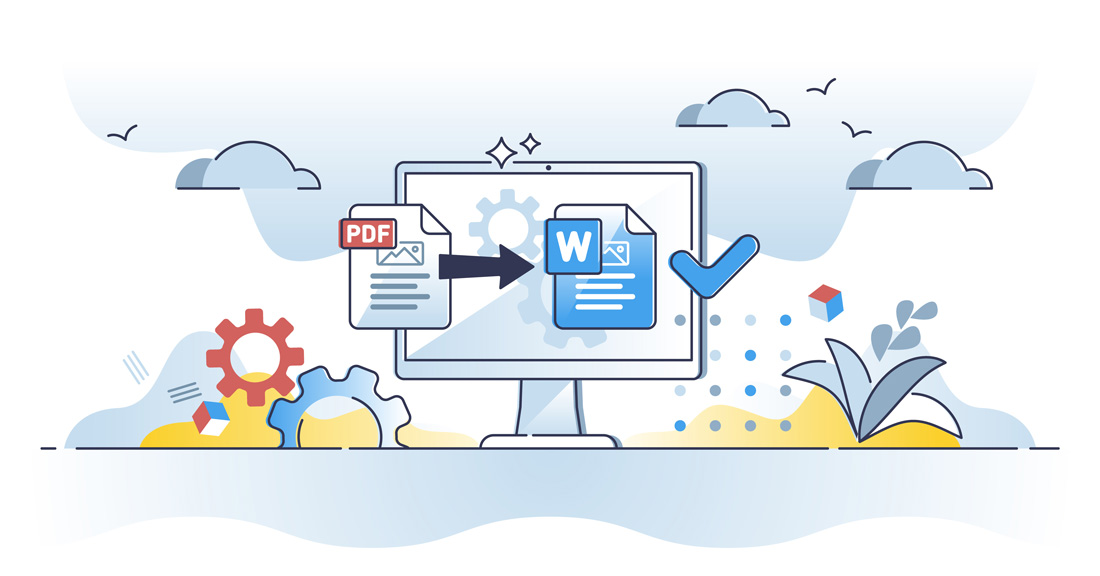5 minute read
In an increasingly digitized world, the right tools can enhance productivity, improve efficiency, and reduce errors. This holds especially true when dealing with document management, a task made simpler with the advent of document conversion software.
Amongst numerous conversions, one particularly crucial transformation is Word to PDF. You can convert your files from Word to PDF for various reasons – security, consistent formatting, or ease of sharing are just a few. You can visit this site for reliable tools to accomplish such an operation: https://www.foxit.com/word-to-pdf/.
With countless software options, making an informed choice can feel like navigating a maze. This article aims to simplify that journey, shedding light on selecting the most suitable document conversion software that aligns seamlessly with your needs. Read on for the details!
1. Consider The User Interface
A software’s user interface is its first impression, serving as the user’s point of contact with the program. An intuitive and user-friendly interface can dramatically improve the user experience, enhancing productivity. It should present a layout that’s easy to navigate, with clearly marked functions and minimal confusion. This is especially important for document conversion software, where the process needs to be quick and error-free.
The ideal interface will have clear user instructions, making conversions a breeze even for novices. It should also be visually appealing, enhancing the user experience. A well-designed user interface reduces the learning curve, maximizes efficiency, and improves overall satisfaction, proving its value in selecting the right document conversion software.
2. Confirm If It Has Diversified Format Support
Diversified format support in conversion software is a critical feature that broadens its functionality. This means the software should be able to convert various types of files, not just Word to PDF. Businesses and individuals often work with multiple file formats such as Excel, PowerPoint, and JPEG. Software that supports a broad spectrum of forms grants users the flexibility to manage different document types without needing multiple tools.
This versatility streamlines workflow increases productivity, and reduces potential compatibility issues. Therefore, when choosing document conversion software, it’s wise to opt for one that supports a wide range of formats to ensure it can accommodate all your document conversion needs.
3. Check Security Features
Assessing the security features of document conversion software is an indispensable step in the selection process. As digital workflows become the norm, the risk of data breaches and unauthorized access rises. Robust software should offer comprehensive security measures to prevent these risks. Features such as password protection and encryption can secure sensitive documents during and after conversion.
The software might also offer watermarks to authenticate and safeguard proprietary information. Some advanced programs provide permissions settings, allowing control over who can view, edit, or distribute the converted documents. Ensuring the selected software offers these protective measures helps maintain the integrity and confidentiality of the data while also upholding compliance with data protection regulations.
4. Check For OCR Capabilities
One feature that you should pay attention to when evaluating document conversion software is Optical Character Recognition (OCR). OCR capabilities transform the software from a simple conversion tool into an advanced document processing solution. OCR technology converts scanned documents, images, or PDF files into editable and searchable formats. This is particularly beneficial when dealing with substantial volumes of scanned documents, as it eliminates the need for manual data entry.
Also, OCR technology enhances the accessibility of information, making it possible to search for specific text within the converted documents. Users can unlock a new level of efficiency and productivity in their document management processes by opting for software equipped with OCR capabilities.
5. Analyze Conversion Quality
Conversion quality is the cornerstone of superior document conversion software. It’s not enough for the software to convert documents from one format to another. Instead, the conversion should accurately retain the original document’s formatting and elements. Whether it’s text, images, tables, or charts, every detail should remain intact post-conversion. Additionally, the software should deliver high-resolution results, ensuring that the converted documents are as clear and readable as the original.
Inadequate conversion quality can lead to disruptions in readability, errors, and an unprofessional appearance, causing potential misunderstandings and miscommunication. Therefore, a thorough analysis of conversion quality is a must to guarantee the reliability and effectiveness of the chosen document conversion software.
6. Consider Cost
The cost of document conversion software is a vital consideration that intersects with value and affordability. While free tools may be tempting, they often lack advanced features or have usage limitations. On the other hand, pricier options may offer extensive features but exceed the budget. The goal should be to balance cost and functionality, ensuring the software meets your needs without straining your resources.
Considering the time and effort it can save in the long run, it’s wise to view this cost as an investment rather than an expense. Remember, the most expensive software isn’t always the best fit.
Conclusion
Finding the perfect document conversion software may seem complex but undeniably rewarding. The right choice isn’t just about converting files; it’s about empowering yourself with a tool that streamlines your workflow, secures your documents, and, ultimately, enhances your productivity. It’s about making an intelligent investment that saves you time and resources in the long run. So remember, your chosen software is not just a tool – it’s your ally in crafting a more efficient, secure, and productive digital workspace. Choose wisely, and you’ll reap the benefits in every document you convert.






